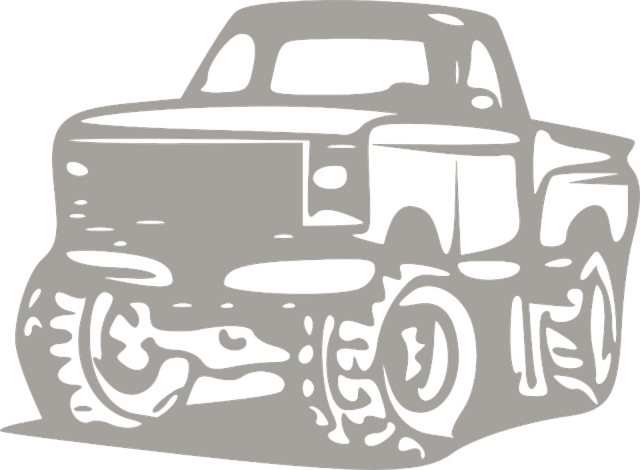Master cylinders are essential for Pharr 4×4 vehicles' braking system, converting driver input into hydraulic pressure for reliable off-road stopping power. Regular maintenance and quick troubleshooting of leaks or stuck pistons are crucial. Replacing a master cylinder requires specific tools, proper vehicle support, and careful alignment for safe and efficient Pharr 4×4 repair.
Master cylinders are a critical component in Pharr 4×4 vehicles, ensuring smooth and reliable braking performance. This comprehensive guide delves into the intricacies of master cylinders, highlighting their essential role in Pharr 4×4 systems. We explore common issues that can arise, providing troubleshooting tips for efficient repairs. Additionally, expert advice on replacing master cylinders offers a step-by-step guide for DIY enthusiasts looking to enhance their Pharr 4×4’s braking capabilities.
- Understanding Master Cylinders: The Core Component in Pharr 4×4 Vehicles
- Common Issues and Troubleshooting for Efficient Pharr 4×4 Repair
- Expert Tips for Replacing Master Cylinders: A Comprehensive Guide for DIYers
Understanding Master Cylinders: The Core Component in Pharr 4×4 Vehicles

Master cylinders are a critical component in Pharr 4×4 vehicles, playing a pivotal role in their off-road capabilities and overall performance. Understanding this core mechanism is essential for anyone involved in Pharr 4×4 repair. It serves as the heart of the vehicle’s braking system, transmitting force from the driver’s brake pedal to create friction on the wheels, enabling effective slowing or stopping, especially under challenging terrain conditions.
In the context of Pharr 4x4s, master cylinders are designed to withstand rigorous use and provide reliable performance. They consist of a cylinder, piston, and fluid, working together to convert the driver’s input into hydraulic pressure. This efficient transfer of force ensures that each wheel receives adequate braking power, ensuring control and safety during intense off-road adventures.
Common Issues and Troubleshooting for Efficient Pharr 4×4 Repair

Master cylinders are a critical component in a 4×4 system, ensuring smooth and efficient power transfer to all four wheels. However, like any mechanical part, they can develop issues over time, impacting overall Pharr 4×4 repair. Common problems include leaks, which may be caused by worn seals or damaged hoses, leading to reduced hydraulic pressure and compromised off-road performance. Another frequent issue is a stuck or faulty master cylinder piston, resulting in difficulty applying brakes, a serious concern for safe driving, especially during challenging terrain.
Troubleshooting these issues requires a systematic approach. For leaks, inspect the cylinder for any visible damage, replace worn components, and ensure proper alignment. If the problem persists, check the fluid level and condition, as old or contaminated fluid can contribute to seal degradation. For piston stickiness, try bleeding the system to remove air bubbles, but if this doesn’t help, it may be necessary to disassemble and clean the master cylinder, replacing internal components if necessary. Regular maintenance and prompt attention to these issues are key to ensuring a well-functioning Pharr 4×4 repair.
Expert Tips for Replacing Master Cylinders: A Comprehensive Guide for DIYers

Replacing a master cylinder is a crucial task for any DIY enthusiast looking to tackle their vehicle’s maintenance, especially when it comes to Pharr 4×4 repairs. This process requires precision and a good understanding of automotive mechanics. Here’s a step-by-step guide to ensure the job is done right.
First, gather all the necessary tools, including a new master cylinder compatible with your vehicle model, a jack, jack stands, and brake fluid. Safety is paramount, so ensure you park the vehicle on a level surface and engage the parking brake. Then, locate the master cylinder behind the wheel, typically near the brake lines and calipers. Drain excess brake fluid to prevent leaks during disassembly. Next, use the jack to lift the vehicle and secure it with stands for easy access. Now, carefully remove the old master cylinder, taking note of its mounting points and connections. Reinstall the new cylinder, ensuring proper alignment and securing all components. Finally, refill the brake fluid and test the brakes for any leaks or performance issues, guaranteeing a smooth driving experience for your 4×4 in Pharr.
Master cylinders are a crucial component in Pharr 4×4 vehicles, ensuring smooth and efficient braking. By understanding their functionality, identifying common issues, and learning expert tips for replacement, you can effectively maintain and repair your Pharr 4×4. Armed with this knowledge, you’ll be better equipped to navigate the process of Pharr 4×4 repair, enhancing safety and performance on the road ahead.



